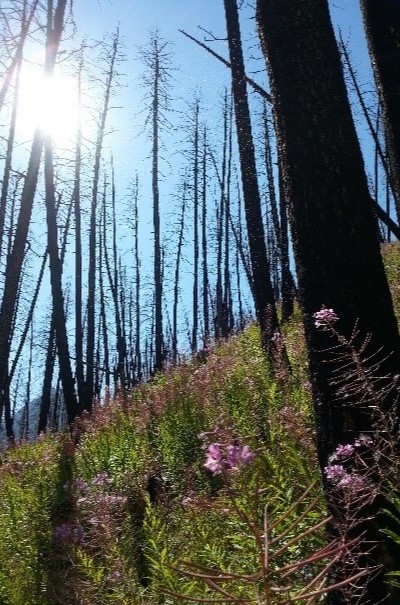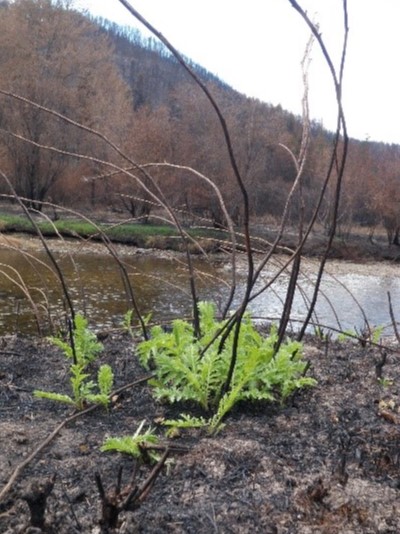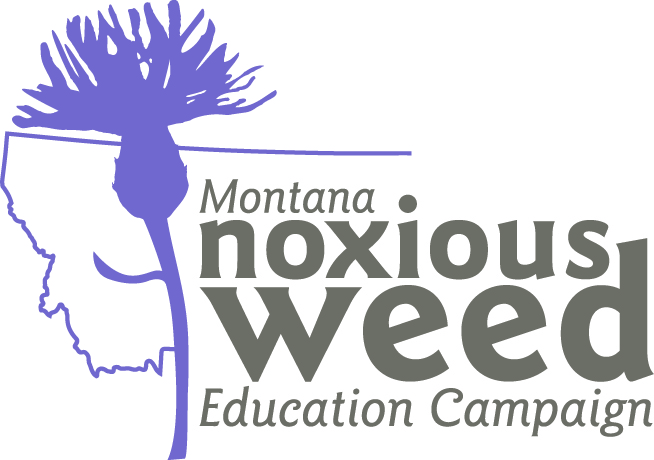Managing Weeds After Wildfire
by Audrey Harvey, Research Assistant at Montana State University
Introduction

Photo by Mike Simanonok.
Wildfires are a form of natural disturbance that can alter our landscapes and increase or introduce weeds. In the last century, wildfires have become more frequent and intense resulting in higher burn severity. Most native vegetation is pre-adapted to fire, though it may take several years to recover and sometimes Integrated Weed Management (IWM) is necessary.
Wildfires Effect on Plant Communities
Weeds are favored by an increase in soil nutrients, bare ground, and sunlight all of which are likely to occur post-fire. Weeds share common traits of colonizing plants including high growth rate, prolific seed production, and being good competitors for abundant resources. Fireweed (native) and Canada thistle (non-native) are examples of species that respond favorably to fire. Plant survival following wildfire depends partly on how severely plant roots were affected. Grasses, forbs, and shrubs with deep roots can resprout from rhizomes and soil surface crowns. For example, leafy spurge (non-native) roots are stimulated by fire. Plants that reproduce by seed may be slower to grow post-fire, however fall-germinating annual grasses like cheatgrass (non-native) are known to quickly colonize burned areas, especially if they were abundant before fire. Firefighting activities, like building firebreaks or staging areas, disturb the ground and remove existing vegetation. One study in Montana found firebreaks built through an area of low density cheatgrass greatly increased cheatgrass compared to adjacent burned and non-burned areas. In another Montana study, fire retardant, which had high amounts of ammonium and phosphorus, acted as a fertilizer and increased cheatgrass. Heavy equipment can increase soil compaction and bare ground, and new weeds can be introduced from seed mixes and donated hay.
Weed Management After Wildfire

Photo by Lindsey Bona.
Wildfire provides an opportunity for weed management because many weeds are quick to sprout post-fire, and they are easy to see because other vegetation is gone. Early detection and management of small weed infestations is the most effective and least costly approach. Chemical control may be more effective than usual in areas where plant litter, which can intercept herbicide application, was consumed by the fire. Monitoring will help you assess if natural recovery is likely or if revegetation is necessary. Whether revegetation is necessary or not largely depends on burn severity and weed abundance. Where burn severity and weed abundance is low, weeds may increase initially but are less likely to increase or persist overtime; where burn severity and weed abundance is high, there may be fewer weeds initially, but they are more likely to increase and persist over time.
Further Information
Read more about weeds and wildfire in the new MSU Extension publication Managing Weeds After Wildfire (27MB PDF).
For more information on this month's Weed Post, contact Extension Invasive Plants specialist Jane Mangold. Past posts are available in the Monthly Weed Post directory.
The Printable PDF (420KB) version of this post includes a crossword puzzle.


